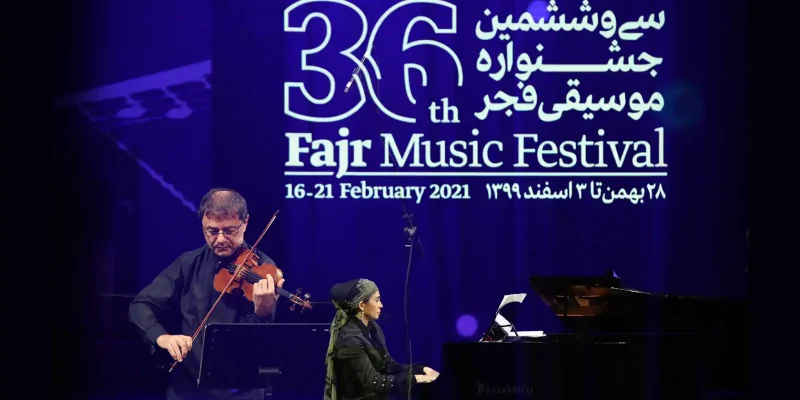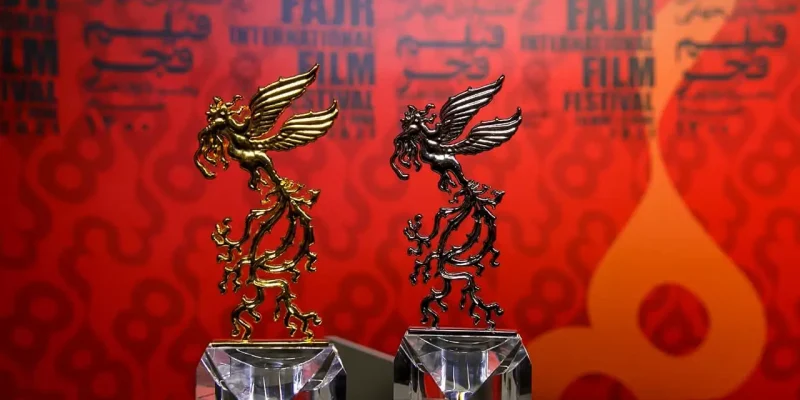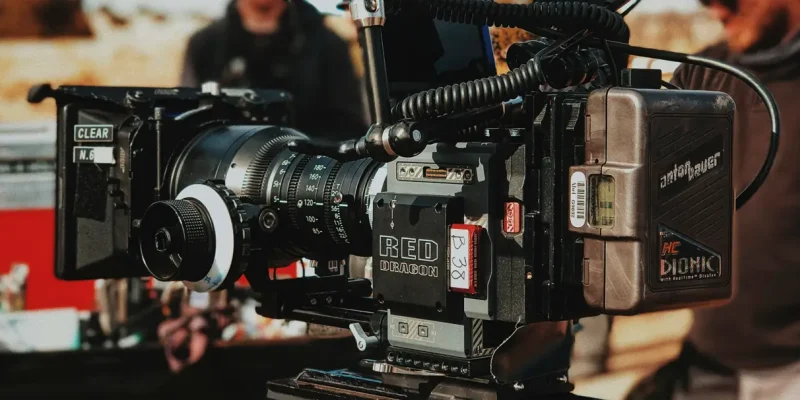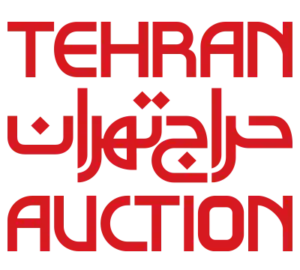
The Tehran Auction has risen as a key showcase for the energy and change in modern Iranian art in recent years. This yearly event shines a light on Tehran as a growing center for art buyers and fans. It also shows how Iran’s deep cultural roots mix with new ideas. The Tehran Auction puts the varied works of known and new artists front and center. This makes it a good way to check the health and trends of Iran’s art world. Anyone who wants to grasp the ins and outs of Tehran’s art and how it matters around the world should not miss this event.
This article digs deep into the story behind the Tehran Auction. It looks at how it started how it’s grown, and how it shapes modern and contemporary Iranian art. The piece also examines how the auction affects artists and the art market. It discusses the hurdles the auction faces in an ever-changing economic and political scene as well as the chances it offers to both artists and buyers.
Readers will also learn about how the Tehran Auction works behind the scenes. This gives a full picture of how it’s become a key player in cultural exchange and investment in Tehran‘s art world.
Background of Tehran Auction
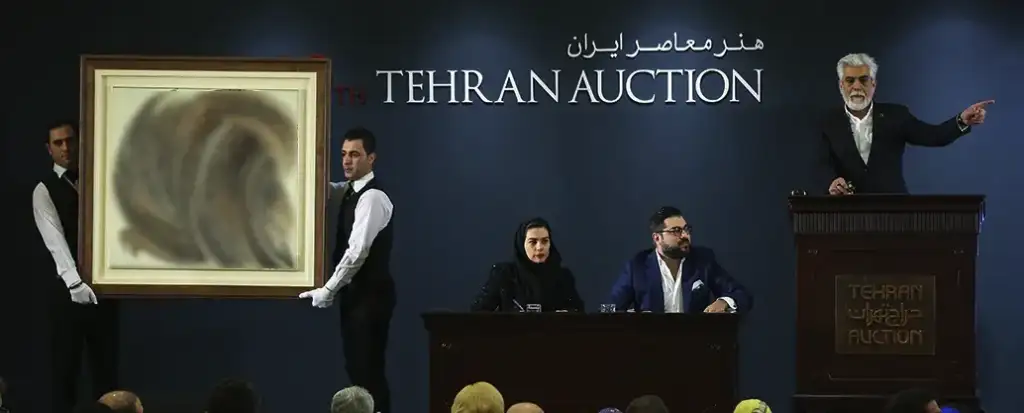
Foundation and Mission
The Tehran Auction began in 2012 as stated on their website. It broke new ground in Iran as a private sector effort to display and boost the best of Iranian art. Growing interest in modern and contemporary Iranian art sparked its creation aiming to help people buy top-notch works from various styles. The auction aimed to back the local art scene and build a solid base for global market recognition. Tehran Auction works with Iranian art galleries and collectors ensuring a wide and strong mix of paintings, sculptures, and photos.
Significant Auctions
Since it began, Tehran Auction has had a major influence on breathing new life into Iran’s art economy. The first auction in 2012 made history, selling 73 artworks for just under a million dollars, which kicked off the public auction platform .
Through the years, the auction has shown a blend of modern, current, and traditional Iranian pieces drawing art lovers from home and abroad. The auction house puts on shows and public auctions twice a year, with each season spotlighting different kinds of art.
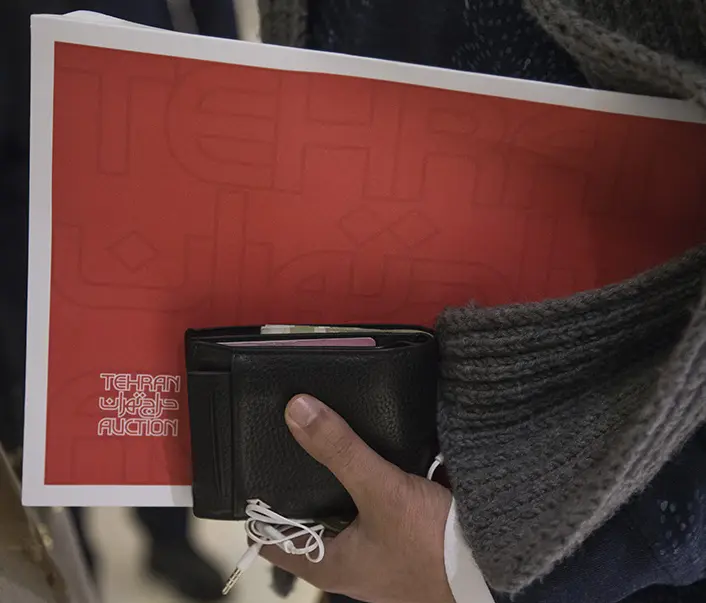
It’s worth noting that Tehran Auction has made waves by not charging a buyer’s fee to get more people to join in and buy art. Ali-Reza Sami-Azar, a big name in the art world and an expert on Middle Eastern art at Christie’s Dubai, leads the auction.
Impact on Modern and Contemporary Iranian Art
The Tehran Auction has a major influence on the visibility and market value of modern and contemporary Iranian art. By showcasing a wide range of artworks, from established masters to emerging talents, the auction has become a key event to give artists more exposure. This exposure matters not within Iran but also worldwide where people appreciate and understand Iranian cultural expressions.
Artist Visibility
The auction has a huge influence on making artists more visible. It offers a stage where artists can show their creations to all kinds of people, from local and foreign collectors to galleries and cultural centers. This spotlight has helped artists join cultural talks beyond Iran’s art world. Because of this many artists have seen their careers take off, getting asked to join international shows and big art events.
Market Value Increase
The Tehran Auction has a significant influence on the market value of Iranian artworks, alongside increasing their visibility. The auction’s success stories where artworks have sold for more than expected, have helped artists and boosted market confidence. Collectors now see Iranian art as a worthwhile investment for their collections. This change has led to a livelier and more stable art market in Iran encouraging stronger financial support for the arts.
Challenges and Opportunities
Economic Constraints
The Tehran Auction struggles with big money problems because of international sanctions that have pushed international art supply makers out of Iran’s market. This shortage has an impact on the quality and size of artworks, with most paintings in Tehran’s galleries not bigger than 60 inches. Art materials cost more and are hard to find, and rents for homes and art studios have shot up. These issues have led to a hidden market. This market runs with a lot of doubt, as dealers in Iran find it hard to send art objects to other countries, and dealers and collectors from abroad can’t do business with Iranian groups.
Cultural Heritage
The Tehran Auction faces tricky questions about cultural heritage. , Iranian cultural advocates have protested auctions selling historical and cultural works that ended up overseas. These sales have caused a stir since people think the Ministry of Culture and Islamic Guidance okayed them even though the Ministry of Cultural Heritage says it didn’t. This shows how hard it is to protect national treasures while still being part of the global art scene. It makes you wonder: how do you keep your culture safe without missing out on money?
How Tehran Auction Operates
Auction Process
Tehran Auction holds events twice a year putting on shows and public auctions for all kinds of art lovers. The first auction happens in summer showing off modern and classic pieces. The second one comes in winter spotlighting contemporary art. This timing helps Tehran Auction stay active in the art world all year round. It’s worth noting that Tehran Auction has made itself stand out by getting rid of the buyer’s fee. They did this to bring in more people and make buying art easier for a bigger crowd.
Types of Artworks Featured
The Tehran Auction showcases a wide range of artworks highlighting modern and contemporary visual arts such as paintings, sculptures, photographs, and calligraphy. It also pays tribute to classical Iranian art by displaying works from masters like Kamal ol-Molk and his peers. This thoughtful selection makes sure that pieces matching these specific categories are included, which helps maintain a clear focus and high quality standard for every auction.
The auction house works to promote both established artists and new talents. This has an impact on boosting the visibility and market value of Iranian art at home and abroad. The selection process involves thorough expert evaluations to check the authenticity and quality of each artwork. This helps build Tehran Auction’s reputation as a top authority in the art market.
Summary
The Tehran Auction has had a big influence on modern and contemporary Iranian art. It has made artworks more visible and increased their market value. This auction serves as a way to measure the art scene in Iran. It also helps artists get noticed and allows collectors to add Iranian art to their collections. The way art and viewers interact at this auction shapes how people see Iranian art. It also encourages more people around the world to appreciate Iran’s artistic contributions.
Looking to the future, the Tehran Auction has the ability to build more bridges between cultures and economies even with the hurdles from global sanctions and worries about preserving culture. It shows how tough the Iranian art world is pushing for more study and involvement in the art market. By keeping up its support and promotion of Iranian artists’ work, the Tehran Auction doesn’t just save a rich cultural history. It also clears the path for future generations to dig into their roots through art, a language everyone understands.
FAQs
Tehran Auction is an annual event dedicated to the sale of Iranian contemporary art, including paintings, sculptures, and other artistic works. It provides a platform for artists to showcase their creations and offers art collectors an opportunity to purchase rare and valuable pieces.
Tehran Auction was first held in 2012. Since its inception, it has grown to become a key event in the Iranian art scene, drawing both local and international collectors, curators, and art enthusiasts.
The auction primarily features modern and contemporary Iranian art, including works by well-known Iranian artists such as Behzad, Faramarz Pilaram, and Shirin Neshat. It also includes a variety of media, such as oil paintings, calligraphy, photography, and sculpture.
Participants in Tehran Auction include a diverse range of individuals: renowned Iranian artists, collectors, art investors, galleries, and curators. The auction also attracts international buyers and art enthusiasts interested in Iranian art.
To participate in Tehran Auction, you must register as a bidder either online or in person. Registration typically requires submitting identification and proof of financial eligibility. Bidders can then place bids during the event or through absentee bidding if they cannot attend in person.
